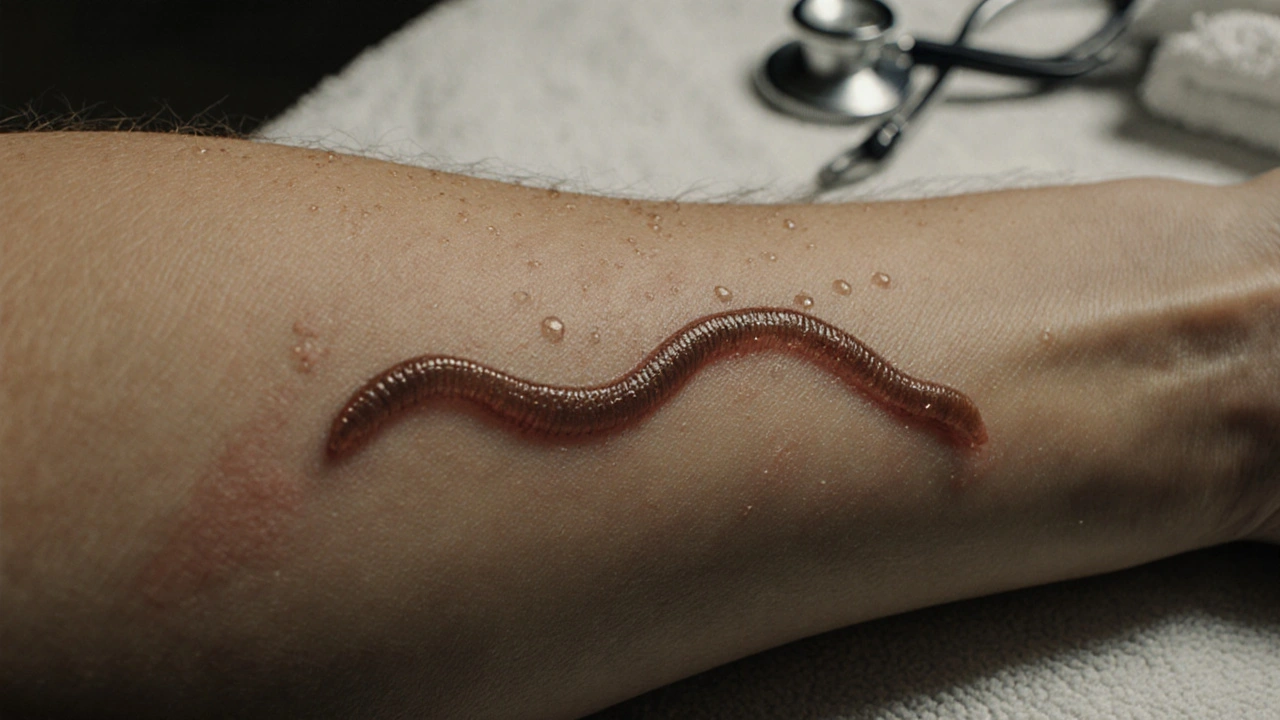Parasitic Skin Infections
When dealing with parasitic skin infections, conditions caused by organisms that live on or under the skin and feed on host tissue. Also known as parasitic dermatoses, they range from itchy rashes to deeper ulcerating lesions. Understanding these infections helps you spot early signs, choose the right treatment, and avoid spreading them to others.
One of the most common examples is Scabies, caused by the Sarcoptes scabiei mite. This tiny arthropod burrows into the upper skin layer, triggering intense itching especially at night. Diagnosis typically involves a skin scraping examined under a microscope, and treatment relies on topical permethrin or oral ivermectin. Scabies illustrates how a single parasite can provoke widespread outbreaks in families, schools, or nursing homes.
Other Frequent Culprits
Beyond scabies, Cutaneous Larva Migrans occurs when hookworm larvae from contaminated sand or soil penetrate the skin. The larvae migrate just beneath the surface, producing winding, serpentine tracks and a burning sensation. This condition often affects beachgoers and people walking barefoot in tropical regions. Prompt therapy with a single dose of ivermectin or a short course of albendazole can halt the migration and relieve symptoms.
Another serious parasite is Leishmaniasis, transmitted by the bite of infected sand flies. Cutaneous leishmaniasis shows up as nodules or ulcers that can leave permanent scars. Early laboratory confirmation—usually a skin biopsy or PCR—guides the selection of antimonial drugs or newer oral agents like miltefosine. This infection highlights the link between travel, climate, and emerging skin parasites.
These three entities—scabies, cutaneous larva migrans, and leishmaniasis—share key attributes: they all enter through the skin, cause varying degrees of inflammation, and require targeted antiparasitic medication for cure. They also differ in transmission (direct contact, environmental exposure, or insect vector) and in the diagnostic tools needed (microscopy, skin scraping, or molecular testing). Recognizing these patterns lets you act quickly, whether you’re a patient, a caregiver, or a primary‑care clinician.
From a practical standpoint, managing parasitic skin infections follows a clear workflow: identify the suspect parasite, confirm the diagnosis, select the appropriate drug, and advise on hygiene to prevent reinfestation. For scabies, washing bedding at high temperatures and treating all household members at the same time is crucial. In the case of cutaneous larva migrans, keeping feet covered and avoiding contaminated sand reduces risk. With leishmaniasis, protective clothing and insect repellents are the frontline defenses during travel.
In the collection below you’ll find detailed guides on each condition, drug comparison tables, safety tips for buying generic antiparasitics online, and real‑world advice on preventing skin infestations. Whether you’re looking for quick symptom checklists or in‑depth treatment options, the articles are organized to give you actionable information right away.
Strange Skin Parasites: Cases of Worms and Bugs Living or Laying Eggs on Human Skin
Explore rare parasites that live in or lay eggs on human skin, from hookworm tracks to Guinea worm blisters, with symptoms, treatment, and prevention tips.
